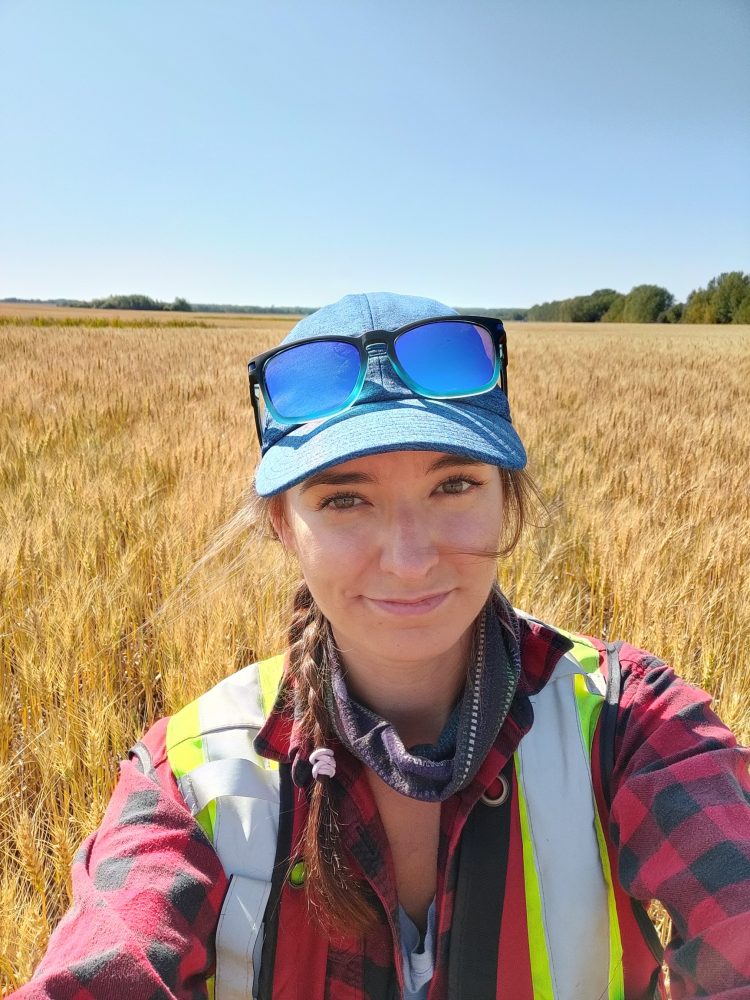The following post is an interview with Alex Hamilton, Remediation/Reclamation Lead, and was conducted by Kelly Zadko, VP of Business Development.
Alex Hamilton holds a B.Sc. (Hons.) in Environmental Science & Geography from the University of Calgary. She has a wide range of environmental experience related to Environmental Site Assessments (ESAs), reclamation, spills, and biophysical work, mainly in the upstream oil/gas industry. Additionally, Alex has extensive Unmanned Aerial Vehicle (UAV) experience, and she worked on a unique project overseeing the installation of over 25,000 native plants into disturbances with Banff National Park. Alex has a tremendous work ethic, always goes the extra mile, and is a valued member of the North Shore Team. I had a chance to catch up with her recently and she provided some great responses to my questions:
Why did you decide to pursue a career in Environmental Science?
“I was always the weird kid in school whose purse was full of garbage and nagged her friends to recycle their drink bottles. I knew that I needed to do something that I cared about so working in the environmental industry always seemed like a no brainer to me. The beauty of environmental science is that it is a wide field with an incredible diversity of niches. So you don’t have to commit to a single ‘job’ for the rest of your life, there’s always room to grow in different directions to find what fits you best.”
You are cross trained between the biophysical and Rem/Rec/Spill team, what do you like most about the work in each team?
“Rem/Rec/Spill: The before and after. Showing up to an area that needs some help and leaving knowing that you have set it up for success – bonus points for getting to come back a few months or years down the line and getting to see it flourishing and knowing that you helped get it there.”
“Biophysical: I really love plants, so anytime I get to hang out in the forest and look at plants (and get paid for it!) is a great day.”
Do you like UAV flying? How do you think it can improve the industry?
“UAVs can give you an amazing combination of detail and spatial scope when evaluating the health or impacts in an area. When you’re in the field you can collect detailed data, but you can only evaluate what you can see – this causes scope constraints due to time, budget, and physical barriers to access. On the other side of the spectrum is satellite imagery which gives you a wide area with low detail. UAV imagery gives the opportunity to collect detailed data at a spatial extent that covers your entire area of interest, and gives it to you in a birds-eye view perspective. It’s the difference between looking at a single puzzle piece and looking at the completed puzzle when it comes to evaluating and understanding an area.”
What has been your favorite project to date?
“Every new project that I work on I get to learn something new, work somewhere new, and work with new people, so every project I’ve been on has had some great aspects. My very first job out of school will always hold a special place though. I worked as a reclamation laborer in Banff National Park, so I got paid to dig holes, plant native plants, and hike around the back woods of the park all day. There was actually a two week stretch where I saw at least one bear every day! The Rocky Mountains are such an interesting environment, and I had the opportunity to work there in such a unique and hands on position.”
What do you do for fun?
“I’m a bit of a homebody, so for day-to-day fun and relaxing I love to cook and try out new recipes, I try to fit in some yoga, and I always love to curl up with my partner Nick, my cats, some Netflix and a fancy cocktail I made myself. On weekends and holidays, I’m either hosting BBQs, camping, hiking, or cross-country skiing. I also love to travel, always in the local non-touristy areas if I can, and I’m a novice sailor.”



